
Hotel Journal evokes 1950s-60s Kuala Lumpur
“This project started first as a typical budget hotel,” says Ramesh Seshan, principal of Seshan Design, the interior design team behind Hotel Journal. “But it got a whole lot interesting after.” If first impressions count, then Hotel Journal got our attention.
While the understated glass-clad exterior of the Hotel Journal melts into the architectural smorgasbord of retail district Changkat Bukit Bintang, pushing through its glass doors reveal a different story. One is first greeted with a spacious lobby with copious wood textures and dark-colored walls and flooring, punctuated with boldly colored geometric carpets and mid-century inspired furniture pieces. You then notice the geometric wrought iron-grilles, reminiscent of the ones found in heritage houses in the older parts of Kuala Lumpur, which serves to delineate the lobby from the café area. And finally, the curiously hypnotizing art piece by Miracle Watts mounted on the wall facing the entrance, where a row of barber’s poles, another retro reference, display a multitude of people (and animals!) swiveling in and out of sight, instead of the usual red and white stripes.
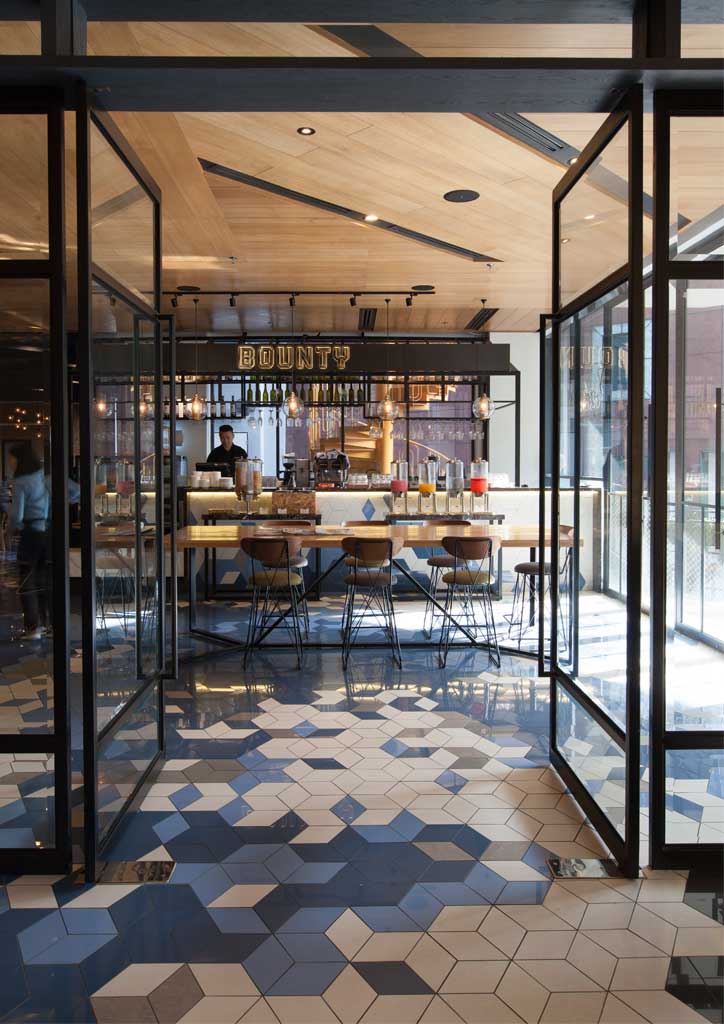
Seshan Design, one of the many creative outfits who brought life to the vision of Hotel Journal, set the hotel apart from its peers by imbuing its interiors with the character akin to a cool KL local out to show you the best of the city. The client, according to Seshan, is an avid traveler who wanted to dip his toe in the hospitality industry. Plans for a basic budget offering eventually went kaput as the young client found inspiration in the offerings of London and Bangkok, and sought to open an affordable hotel in Kuala Lumpur that was both bold and stylish, yet uniquely Malaysian in character.
The client’s design brief entailed a lot of R&D on both his and Seshan Design’s part, as the firm, which specializes in residential and F&B projects, had never taken on a hotel project before. After several research trips and 30 design studies later, both client and designer found what they wanted.
Seshan was adamant that the hotel’s design, the largest project handled by his team so far, would not be another modern me-too. The team consciously eschewed the exposed concrete, white paint and minimalist aesthetic presently in vogue around the world (“It may look pretty in pictures, but would you really want to live there?” remarks Seshan), and went maximalist. They employed an eclectic array of materials, ranging from warm wood textures for walls and ceilings, brightly-hued ceramic tiles reminiscent of vintage spaces, jet-black metals and even Greek marble (“Sometimes you just really have to spend a bit for good materials,” Seshan says).
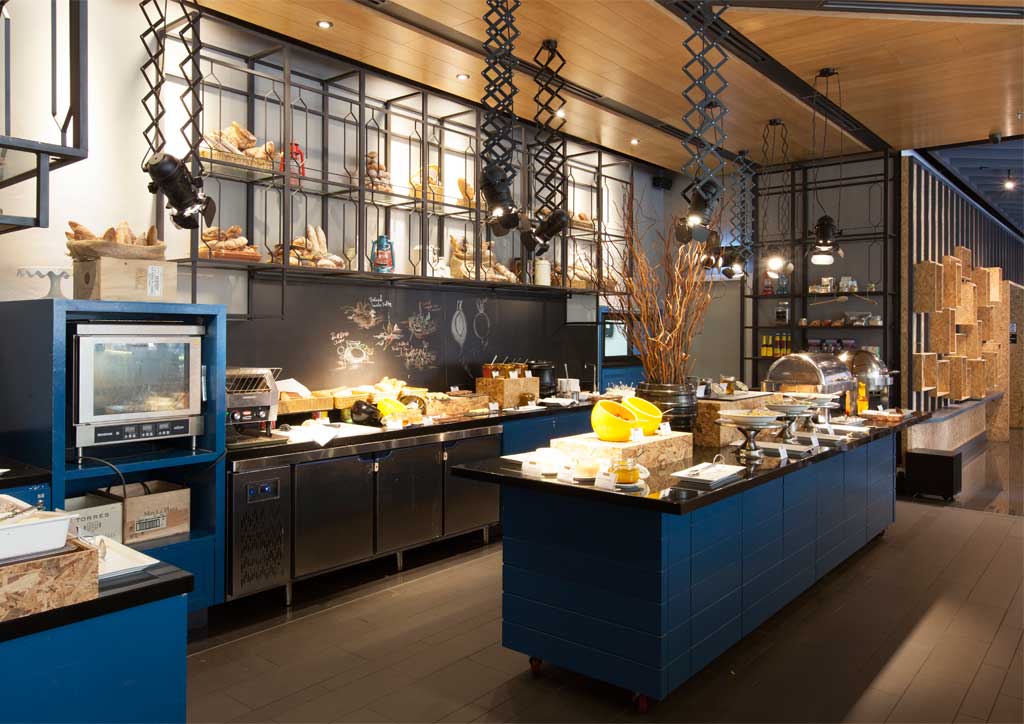
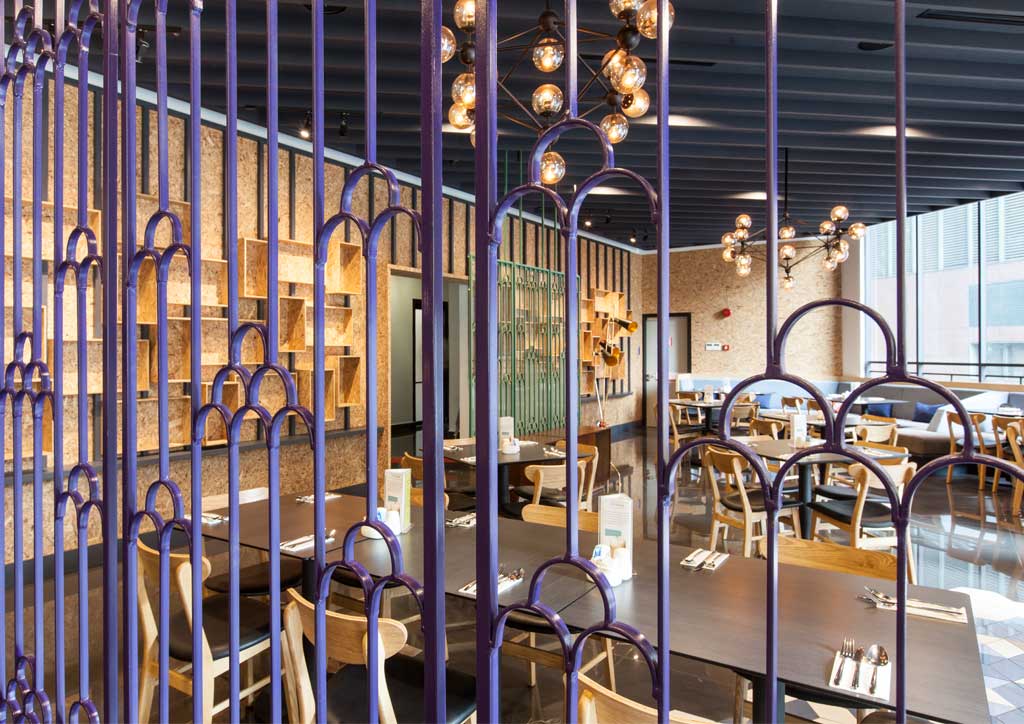
While the overall interiors are industrial in look, the firm looked for ways to give each space a decidedly Malaysian flavor and borrowed heavily from heritage architecture and local nostalgia. The team integrated traditional architectural motifs and elements into their design, incorporating wrought-iron grilles, a fixture in many traditional Malaysian shop houses, as porous dividers and accents into their spaces. They even went as far as designing a 1950s-inspired art deco spiral staircase (which they painted a fiery orange) as public access to The Terrace, the hotel’s bar and grill on the second floor.
READ MORE: Seshan Design designs F&B duo of Parisian bakery and NYC cocktail bar

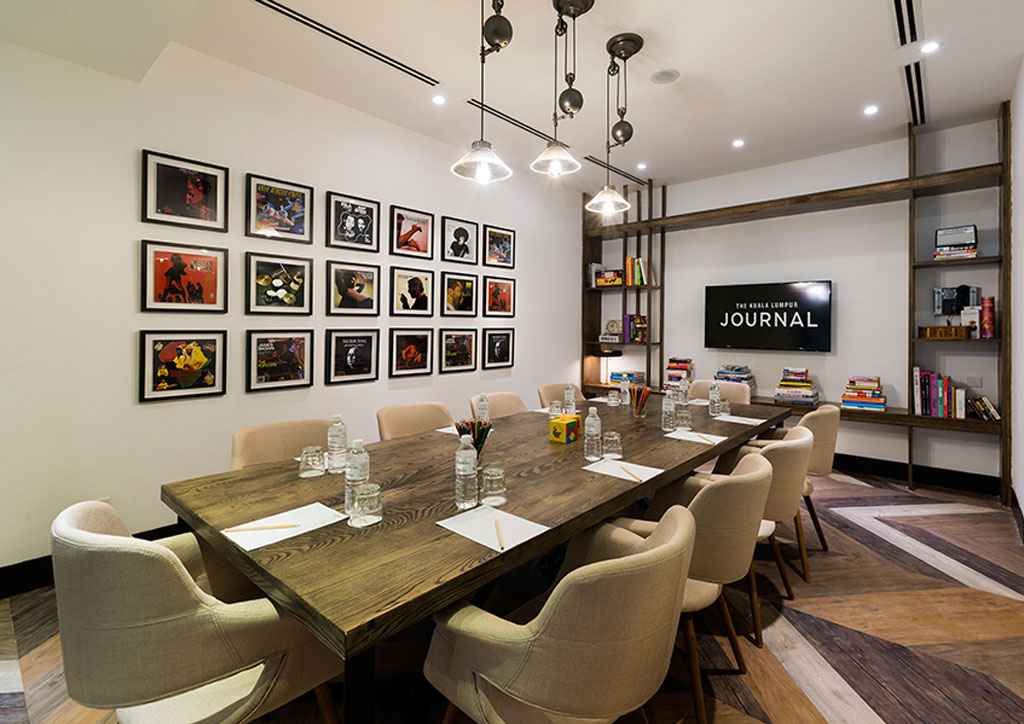
“We wanted to evoke the look and feel of a classic, 1950s-1960s Malaysia,” Seshan remarks. “The overall look is still very contemporary, but then you see these little things that recall the good old days and evoke nostalgia that forges a connection between the hotel and the surrounding community. This is something many hotels rarely do.”
To create a sustainable business model for the hotel, KL Journal was designed to cater to events and functions from the start. “Many hotels tend not to engage the public realm. So one of the first things we did is design a café to open the building to the public, and not just hotel patrons. What the hotel owners did is to also open the space up to events,” says Seshan. Apart from serving authentic teh Tarik and gourmet sandwiches to hotel guests and public patrons, the ground floor Bounty Café, can be rented for commercial events and business functions.
Hotel Journal’s business center on the First Floor, christened Workers’ Union, incorporates two meeting rooms called Studios, and a Business Centre with an open, co-working space called The Hub. An even larger events space for bigger functions and exhibits called The Gallery is also available, with enough room for 100 people. As the perfect complement, Workers’ Union opens out to The Terrace Bar and Grill, a beer garden-inspired al fresco dining space, providing meeting-weary businessmen respite for a round of sundowners. “Opening the hotel to events works like advertising for the hotel,” remarks Seshan.
READ MORE: Sushi Rei restaurant in HCMC uses 4,500 cypress tiles
Hotel Journal didn’t scrimp on the creature comforts of its staying guests. The 117-room hotel has one of the largest hotel bedrooms in its class, ranging from 28 to 35 square meters, with all rooms opening out to views of the city. Expensive Sealy mattresses come standard, with two pillow types on offer for guests with discerning heads. Every room is even equipped with JBL Bluetooth speaker alarm clocks to rouse you for the day’s itinerary.
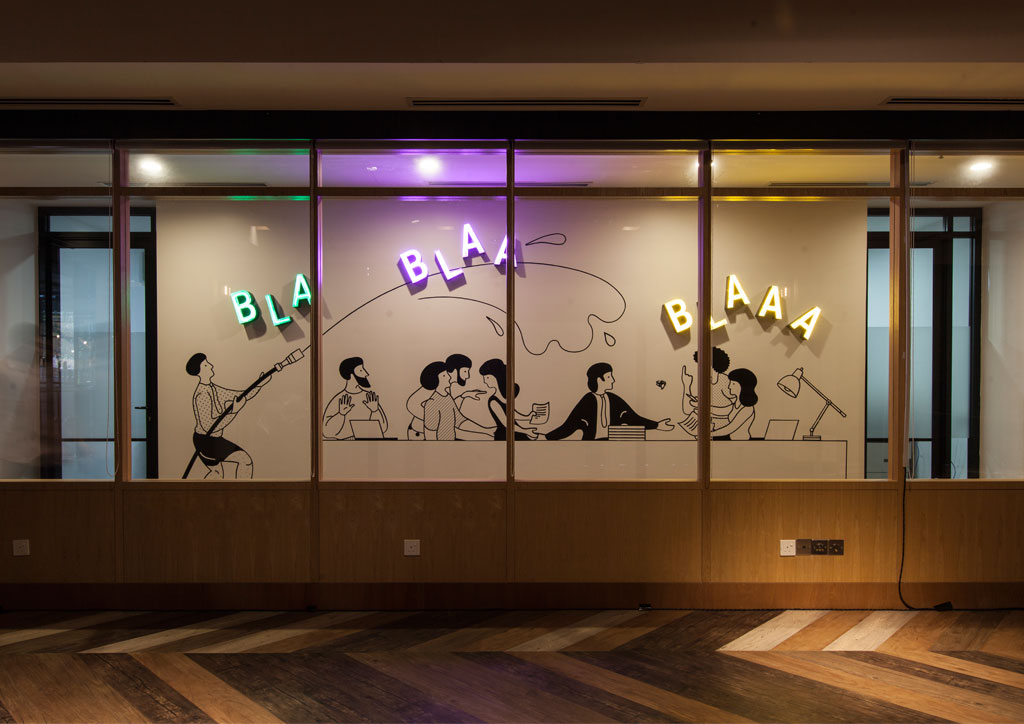
The Hotel Journal’s eccentric charm and local spirit also relied heavily on art and graphic design. Trinity Visual Communications, a Malaysian graphic design consultancy, was given charge of the hotel’s branding and collaterals, their work capitalizing on local nostalgia and the excitement of discovery. The team designed a hand-illustrated city map highlighting Kuala Lumpur’s usual tourist traps with some lesser-known finds. In lieu of the usual room notepad, Trinity designed a Buku Tiga Lima, an iconic Malaysian notebook used by vendors and traders of the past to keep track of credit dues, and where guests can now write about the day’s highlights.
The work of noted Malaysian street photographer Che’ Ahmad Azhar, was also given prominence by the hotel, with each room having a blown-up print of the sights and scenes of daily life in Kuala Lumpur, captured by the photographer in dark, dramatic monochrome. For the Workers’ Union, quirky and playful wall art by (Miracle Watts) of comical figures and local culture references add a hint of mischief to the interiors, a reminder to guests to not be so serious, and that the hotel is a willing accomplice.
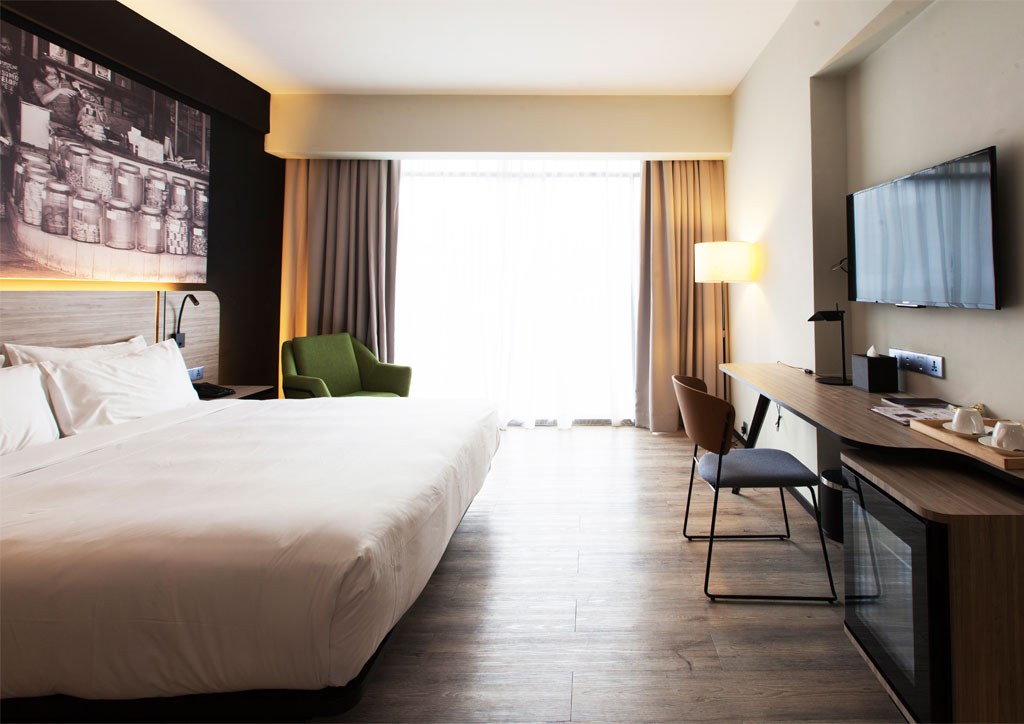
When asked how the hotel was received, Assistant Director of Sales & Marketing, Khairil Anuar remarks, “Of course, there is trepidation at first in opening a hotel like this to the market but I’m pleased to say the response is very good. I think the hotel was able to satisfy something our patrons have been looking for: an out-of-the-box experience, a stay that is informal and carefree.” We have to agree. We are surprised at the mix of young and old at the hotel. As BluPrint shoots downstairs, group of elderly women having brunch laugh over cups of tea in The Bounty, as two Malaysian hipsters sip espressos while working on laptops. Over at the lobby, a group of foreigners take turns snapping selfies beside the neon signage announcing the hotel’s mantra, “Eat Well, Travel Often.”
The hotel’s quirky fusion of old and new seems to have struck a chord across demographics. For a keepsake, I take a quick video of the carved figures of people young and old, of different dispositions and occupations, spinning endlessly in the lobby. Reminded of it now, I can’t think of a better metaphor for why the Hotel Journal works. In providing what local and international travelers need while celebrating context, culture, and community, Seshan Design has succeeded in fulfilling the hospitality industry adage, “Think global, design local.” Hotels that do it the other way around by and large leave visitors cold. By choosing a local, nostalgic narrative, Hotel Journal is a page-turner in a library of bland books. ![]()
This article first appeared in BluPrint Vol 2 2017. Edits were made for Bluprint online.
READ MORE: The Pig and Palm: Neri&Hu’s temple for tapas in Cebu


READ MORE: Jorge Yulo’s Mecha Uma draws praise from INSIDE judges


